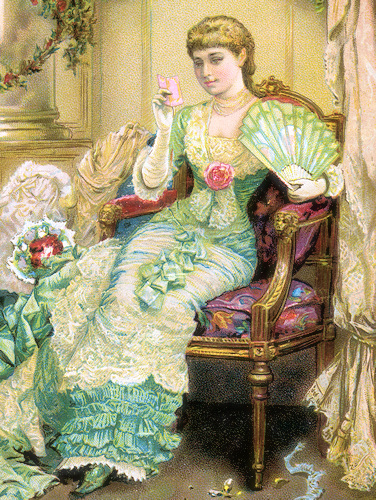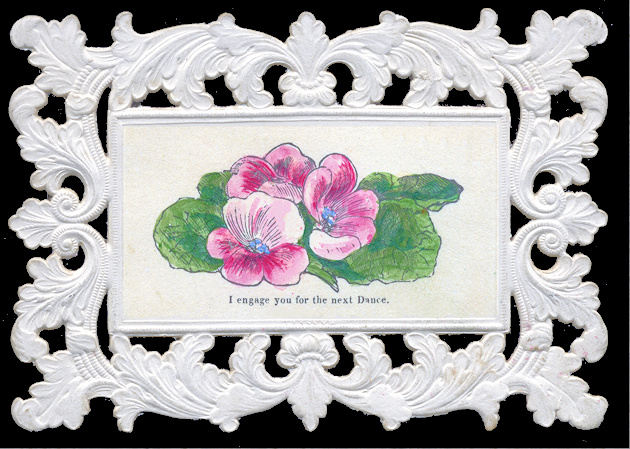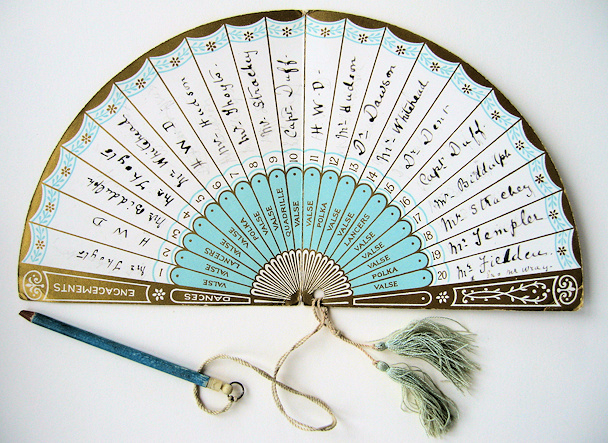 |
|
| News About Us Membership Events Links |
The Dance Card
In early Victorian England, the ballroom was a stage for courtship, social interactions, and the display of refinement. Balls and dance events were a highlight of the social calendar, especially for the upper and aspiring middle classes, who sought to establish connections and secure advantageous marriages. These gatherings ranged from grand assemblies in aristocratic townhouses to more modest yet still elegant soir es in provincial halls. Strict etiquette governed every aspect of the evening, from the formal invitation to the dance itself, ensuring that propriety and decorum were upheld. Young women, often chaperoned by their mothers or guardians, were introduced into society at such events, where they could demonstrate their poise, charm, and social graces.
Dance cards played an essential role in the structured ritual of the evening. A gentleman would formally request a dance, and if accepted, the engagement would be recorded in the lady s dance card a vital tool for keeping track of partners and preventing any social missteps. This particular example produced by Mansell, with its pierced embossing and delicate hand-painted flowers, exemplifies the elegance of these tokens of flirtation. The inscription, "I engage you for the next Dance", suggests a more spontaneous or playful invitation, perhaps exchanged before the official dance order was filled. It reflects the romanticised nature of the ballroom, where brief yet significant moments of interaction could lead to enduring attachments. The dances themselves followed a carefully orchestrated sequence, often beginning with a stately quadrille or waltz before moving into livelier reels and polkas as the evening progressed. Music was provided by a small orchestra or ensemble, setting the pace for intricate footwork and graceful movement.
Beyond the dance floor, the ballroom provided spaces for conversation and refreshment, where guests could engage in discreet flirtations or discuss the latest society news. For many young people, these occasions were one of the few opportunities to engage freely with potential suitors under the watchful eyes of family and acquaintances. Dance cards are a tangible link to this world of etiquette, romance, and ritual. The combination of fine craftsmanship and personal sentiment speaks to the significance placed on even the smallest social exchanges. As a piece of ephemera, it not only captures the aesthetic tastes of Victorian times but also serves as a reminder of the carefully choreographed nature of 19th century courtship.
|
|
|
Home | News | About Us | Membership | Events | Links | Contact | Item of the month | Articles |
| Copyright © The Ephemera Society 2025. All Rights Reserved. |

